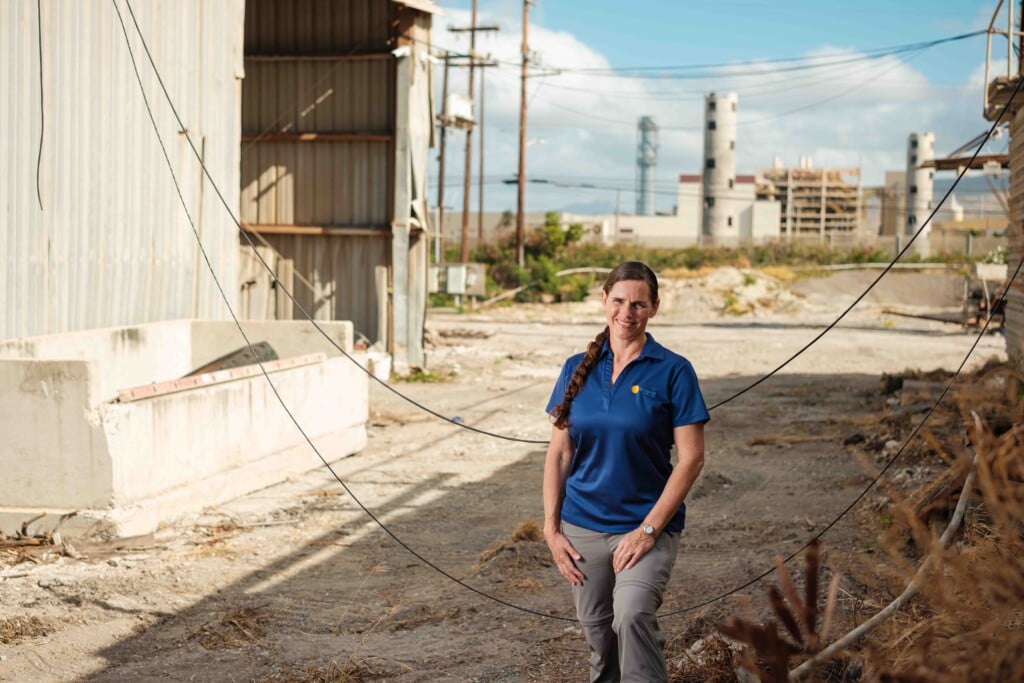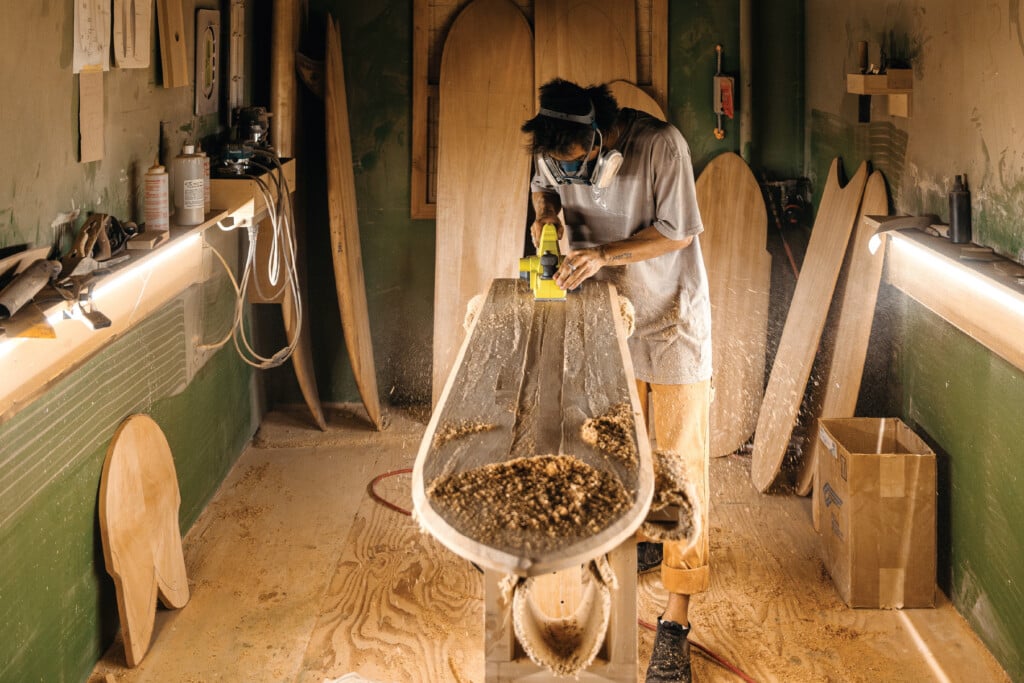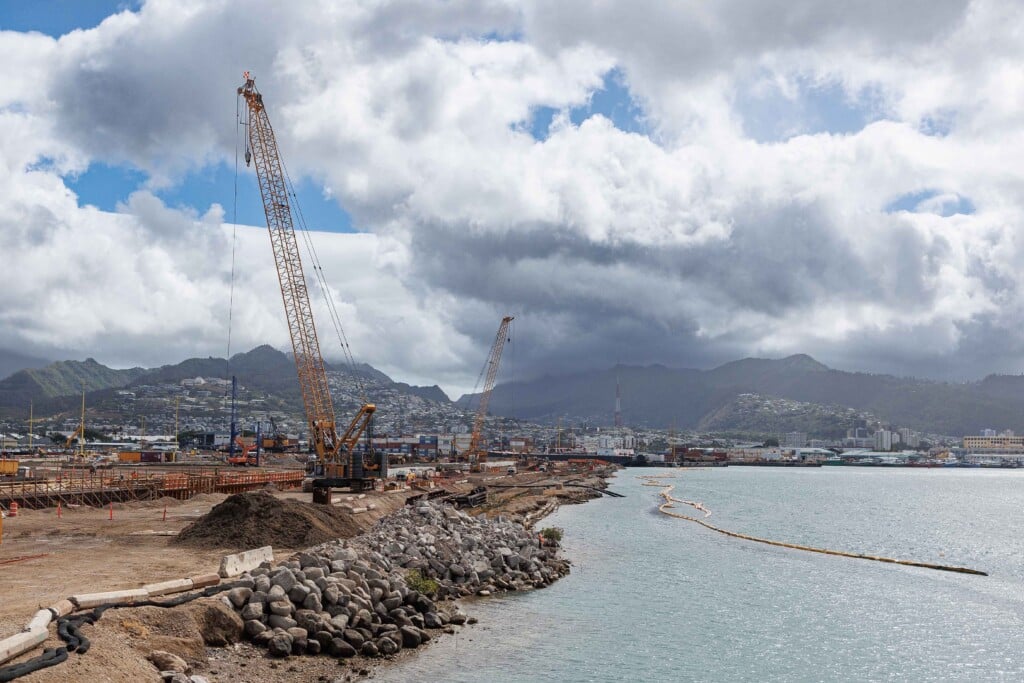Geothermal is a Red-Hot Topic
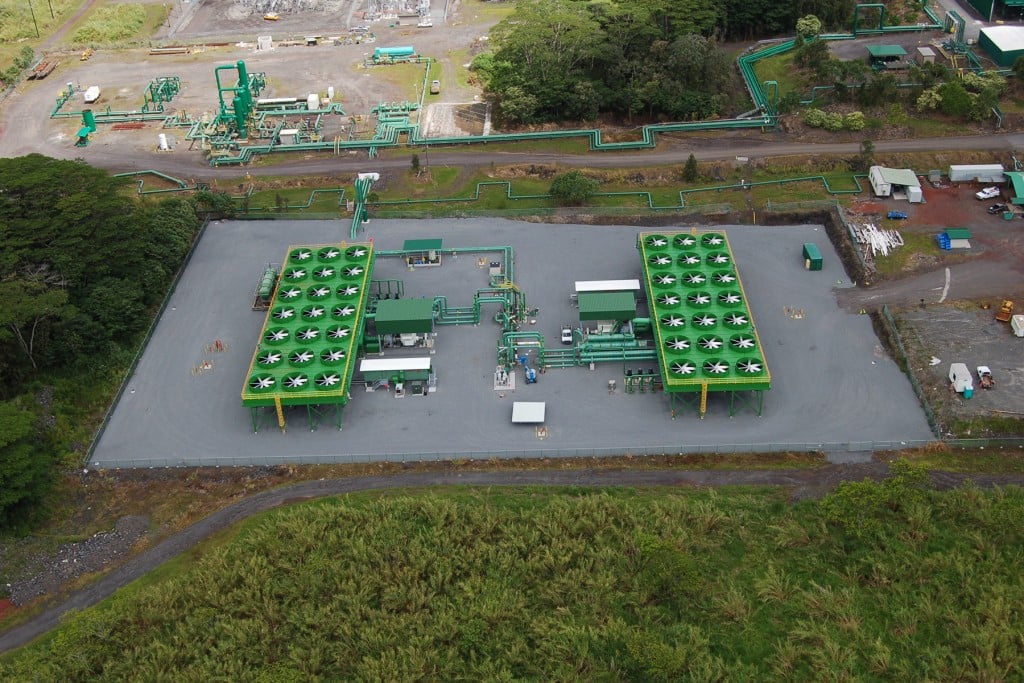
Some things are almost impossible to oppose: Mom, apple pie and renewable energy. After all, renewable energy promises independence from world oil prices, fewer greenhouse gases and, possibly, lower prices. For many people in Hawaii, geothermal perfectly fulfills that promise – energy that is relatively cheap, plentiful and always on. For others, especially people living close to the existing geothermal energy site in the Puna District of Hawaii Island, geothermal energy is not a promise but a threat – a dangerous experiment that could injure and kill.
This year is the centennial of the world’s first geothermal-generated electricity, which occurred in Italy. Today, geothermal electricity is produced in eight U.S. states and 23 foreign countries, according to the Geothermal Energy Association. Nearly 40 more countries have projects at some stage of development. Advocates say decades of global experience undeniably prove the value of geothermal power. However, opponents say Hawaii’s unique situation defies easy comparisons with other locations.
The local debate has heated up this year for two reasons. One was a blowout of toxic gas in March, the first significant incident in Puna in 22 years and one that renewed opponents’ resistance to geothermal. The other reason is that Hawaii Island’s power utility, the Hawaii Electric Light Co., is ready to more than double its use of geothermal power. HELCO asked for and received six confidential proposals to provide up to 50 additional megawatts of geothermal power to its islandwide transmission grid. HELCO’s current peak demand is less than 200 mw, so new and existing geothermal generation could combine to supply almost half of the Island’s peak energy needs.
“Moving forward on geothermal is important to Hawaii Island because we want to increase our use of renewable energy and bring down costs for our customers, while also ensuring reliable service,” says HELCO president Jay Ignacio. “At the same time we’re pursuing bidders who are committed to thoroughly addressing environ-mental, community and cultural concerns.”
The Puna district already supplies HELCO with 38 mw of power, thanks to the generating plant run by Puna Geothermal Ventures. PGV has been tapping superhot brine deep beneath the surface since 1993, using its steam to run turbines and feeding the resulting power to the grid. The long-term plans are ambitious. Many people statewide think that, in time, it would be a great idea to lay an underwater cable so other islands could share electricity generated by Hawaii Island’s vast geothermal resources.
The Native Hawaiian community is divided on the issue. Some Hawaiians believe that it would be sacrilege to drill into and extract energy from Mauna Loa, home of the volcano goddess Pele and one of the world’s most active volcanoes.
“What do you think drilling is? There is no ‘small’ rape – rape is rape! There is no such thing as ‘clean’ geothermal,” exclaimed Palikapu Dedman, founder of the Pele Defense Fund, at a rally in July in Pahoa, less than four miles from the site of PGV’s plant.
Other Hawaiians, such as Pat Kahawaiolaa, say the free energy from the earth is a gift from the goddess and we should be grateful for her bounty. “This island could run on geothermal easily. To me, geothermal is a no-brainer,” says the retired postal worker, who was appointed by the state to the Geothermal Working Group.
His view is echoed by the Innovations Development Group, a company that says it is mostly owned by Native Hawaiians and wants to harness geothermal energy in a sustainable way while preserving cultural traditions. IDG helped the Maori people in New Zealand to develop geothermal energy under the premise that all natural resources belonged to them before European colonists arrived, and they should receive some of the benefits from new developments.
IDG calls it a native-to-native business model and now seeks to apply the same principle in Hawaii. The company recently received a $600,000 investment from the Office of Hawaiian Affairs and leased a 400-acre parcel in Puna.
Although HELCO’s request for proposals forbids IDG from confirming it, it’s a safe bet that IDG is one of HELCO’s geothermal bidders.
Global History
The first geothermal power plant in New Zealand opened in 1958 and geothermal now supplies about 10 percent of the nation’s electricity, according to the New Zealand Geothermal Association.
Geothermal has an even longer history in Iceland, where legend has it that people first used geothermal heat 1,000 years ago to warm their homes and bathed in the hot water. But it wasn’t until the first oil-price shock of the 1970s that Iceland used geothermal heat to generate electricity. Today, the National Energy Authority says, 30 percent of Iceland’s electricity is produced by geothermal sources and most of the rest comes from hydroelectric dams.
Iceland has abundant geothermal energy because it lies on a crack in the Earth’s crust where the North American and Eurasian plates are pulling apart. That makes it very different from the volcanic geothermal energy that lies beneath Hawaii Island, which is generated by a volcanic hotspot, not shifting continental plates. New Zealand, with both active and dormant volcanoes, is a better comparison with Hawaii’s situation.
Proponents of geothermal development in Hawaii also often point to California, where power has been safely generated with underground steam sources since 1960. Comparison is tricky. Hawaii has one well; it is hot and toxic. California has scores of wells and they vary from hot to “cold” (below 212 degrees Fahrenheit). Compare Puna with the town of Calistoga in Napa County where mineral-rich water is tapped, cooled and bottled as a health tonic.
Facilities found in populated areas are primarily low temperature and therefore less toxic.
California wells produce both steam and hot water (the hotter the water the more contaminants are leached from the bedrock) and gases. Naturally occurring pollutants in both states and other geothermal sites worldwide include heavy metals, ammonia, sulfur dioxide and hydrogen sulfide. Hydrogen sulfide, or H2S, is the main fear of Puna residents: It is invisible, smells like rotten eggs and works like carbon monoxide or cyanide gas on the human respiratory system. That means prolonged exposure or high levels can kill you.
From 1982 to 1999, there were 38 documented leaks, repairs and Civil Defense emergencies from either the original, experimental, government-sponsored, three-megawatt plant, named Hawaii Geothermal Project – A, and Puna Geothermal Venture’s subsequent 38 mw generating facility. HGP-A closed in 1989.
40 years of study
University of Hawaii geochemist Don Thomas was on the job when HGP-A was drilled in Puna in 1976 next door to where the PGV facility now stands. He spent more than a dozen years testing and monitoring the hot mix jetting up the pipe from more than a mile deep. After 40 years of researching Hawaii’s geothermal re-sources, if anyone knows what Pele’s gift is comprised of, it’s Don Thomas. He dismisses the current anti-drilling activism as “a longstanding disinformation campaign.” After all, he points out, HELCO’s Kanoelehua-Hill plant, which burns oil to generate electricity, “dumps 500 pounds of sulfur dioxide – a no less environmentally and physiologically damaging compound – into the atmosphere every hour.”
As for hydrogen sulfide, he reminded me that OSHA safety rules allow well workers to remain in an atmosphere of 10 parts per million for an eight-hour day, five days a week. Further, occasional spikes of 15 parts per million are authorized for up to 15 minutes, the major risk being eye irritation.
“When I was conducting analyses of geothermal steam samples, the air in my lab consistently had five to 10 parts per million of H2S for hours at a stretch,” he says. “High concentrations can be dangerous, and this compound, like any other, needs to be treated with respect at those concentrations. Recent research, however, has begun to show that lower levels of exposure to hydrogen sulfide may actually be therapeutic.”
At the same time, Thomas recalls standing near the original well when steam discharged at 300-400 degrees Fahrenheit with an H2S content of 800 ppm.
The worst geothermal incident occurred in 1991, when a pressure pipe ruptured and vented 2,200 pounds of H2S into surrounding neighborhoods. At least 75 Puna residents were evacuated from their homes for several days.
Geoff Last vividly remembers that incident.
“I have lived in Puna for 29 years and witnessed and experienced geothermal energy,” says Last, now retired from his flower-growing business. “When I first arrived here, I believed in geothermal – free, clean, green and wonderful. The Department of Health allowed open venting and dumping of waste on the ground. My son used to ride home on the school bus through clouds of H2S and heavy metals and tell me about the smell and how he did not feel so good. I was busy building my home and my flower business and still believed in the Health Department and geothermal. Then the blowout in 1991: We were told to leave our homes. I got educated.”
Last is a board member of the Puna Pono Alliance, a citizens’ group that opposes more geothermal plants in the Puna District.
The 1991 leak was followed by 22 years with no major incidents from the PGV plant before another blowout on March 13 of this year. One of the two transmission lines to HELCO was down for repairs and the second one failed. Before the turbines could be turned off, raw, toxic steam was released into the PVG compound and the neighboring community.
A hazmat team and other emergency crews responded, but no one was injured and no evacuation was ordered; the highest reading of H2S detected outside the PGV site by the Hawaii County Fire Department was three parts per million. County Civil Defense doesn’t order an evacuation unless the leak is not contained and if sustained readings of at least 10 ppm are detected.
Mike Kaleikini, senior director of Hawaiian Affairs for Ormat Technologies, the parent company of PGV, greeted me in July at his office on the PGV compound. It is a low, wooden, prefab structure that can be moved in case of seismic event or volcanic emergency. HELCO required that bids on the new geothermal power generation be kept secret, so Kaleikini would neither confirm nor deny if PGV was a bidder. But, in the past, Ormat has advocated for geothermal expansion, so it seems likely that the company was among the six bidders for the new project.
As we talked about the March 13 blowout, he asked, “Why is everyone so excited about this event? We’ve had a number of leaks before.”
In the eyes of geothermal advocates, the blowout was a minor problem that was quickly contained and posed no threat to residents. The system worked. To opponents, the leak confirmed their suspicions that, despite 22 years of improvements, geothermal technology was still not entirely safe. The system doesn’t work.
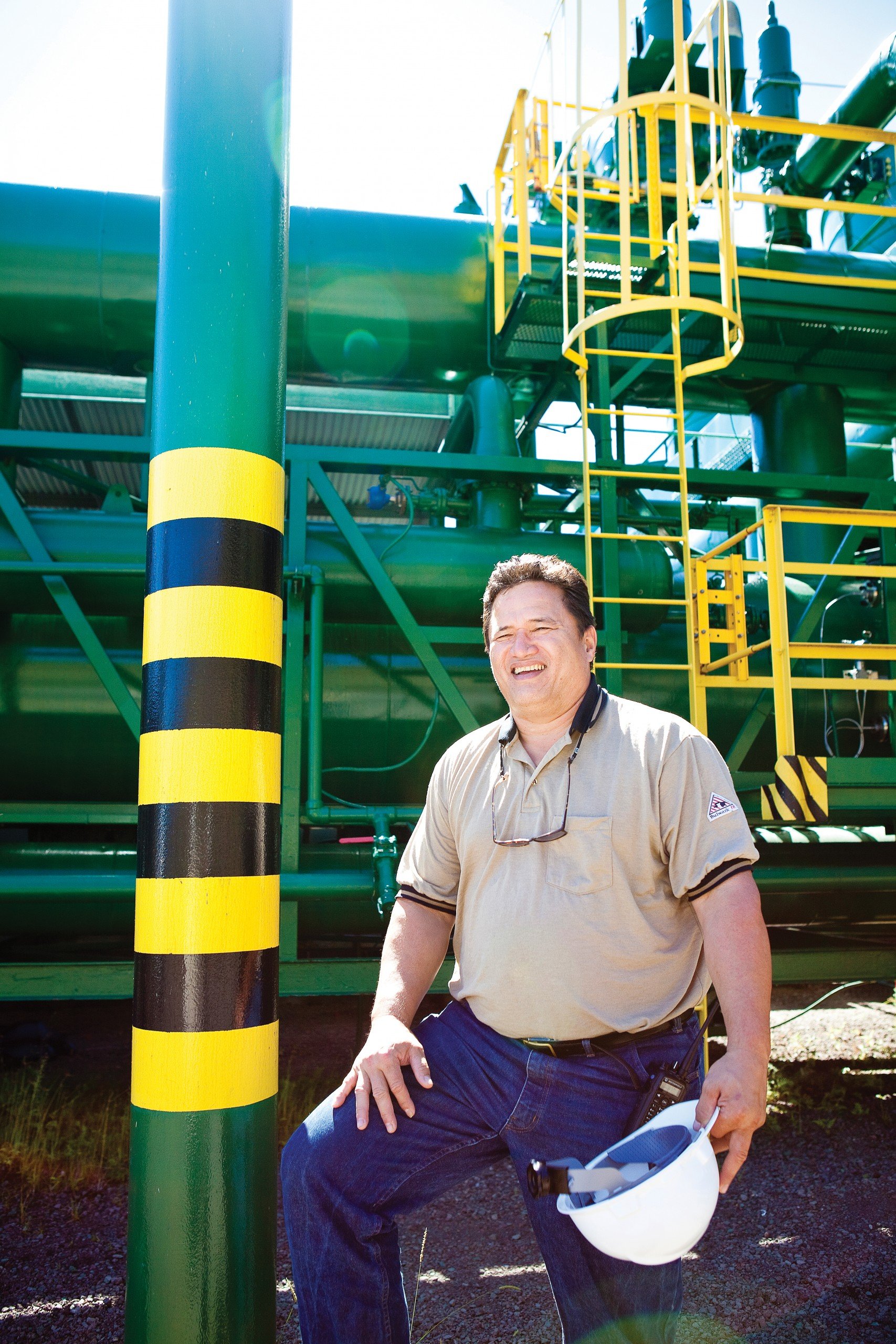
Mike Kaleikini, director of Hawaiian Affairs for Ormat Technologies.
Harry Kim
Another thing that has upset opponents is a move by the state Legislature to eliminate their ability to fight geothermal through the county regulatory process. They believe they have been robbed of their right to public input and to present their health and safety concerns, and Harry Kim agrees with them, even though he personally favors geothermal energy.
Kim became well known and well loved during his 16 years as civil defense administrator for Hawaii County from 1984 to 2000. He understands the concerns about geothermal power generation in Puna: At least 18 times during his watch, civil defense teams were called out to monitor an H2S leak or other emergency. He personally supervised the evacuation of downwind homes during the 1991 blowout. “It was my job,” he tells me. Some people, however, still criticize him for not shutting down the whole geothermal operation when they say he had the chance.
His reputation was so strong among Hawaii Island’s people that they voted him in as mayor in 2000 and then re-elected him in 2004. Fast forward to Nov. 29, 2012: The soft-spoken politician, now in his 70s, had just lost his bid to oust the incumbent mayor, Billy Kenoi. With his salt-and-pepper hair and wearing a colorful aloha shirt, he addressed an audience in Pahoa assembled by the Puna Pono Alliance to explain why he had run for office again.
“I was a happily retired grandfather,” he related, but added that his relaxation was interrupted by a disturbing phone call from a friend. “It was the first I’d heard about Act 97.”
That spring, the state Legislature had passed two new laws to expedite development of alternative energies, a law which effectively repealed Act 296-83, which itself created six drilling “subzones” designed to restrict exploratory operations within defined areas. Kim told the crowd that Act 97 removed all county authority to approve or deny applications for geothermal drilling and power generation projects. The right of county home rule was erased, he said. The second new law, Act 55, authority to authorize exploration, had been transferred to a new entity, the Public Land Development Corp., which also had power over other developments. Act 55 has since been repealed, though Act 97 remains in force.
“I approve of geothermal energy,” Kim told the crowd in Puna, “as long as it respects the rights of the people. But Act 97 has no rules on where to drill, no rules for a county permitting process. It took it all away. Act 97 must be repealed. That is why I ran.”
Among the local residents in the audience was Russell Ruderman, the newly elected state senator from Puna. That evening, Kim asked for his help at the Legislature to overturn Act 97 and reinstate home rule. Early this year, Ruderman introduced a bill to repeal Act 97 and Kim flew to Honolulu to testify on its behalf.
Their efforts were in vain. “It was the worst day of my life,” Kim said after the Legislature blocked the repeal effort. But Ruderman hasn’t given up. He confirms that in the upcoming legislative session, he will introduce a bill to amend Act 97 to restore county oversight over the permitting process for geothermal projects.
As spelled out by the schedule in HELCO’s Geothermal Request for Proposals, the six bids received by April 30, 2013, were to be evaluated and the winners selected by the end of August 2013. But the winners were not announced then and it may be March 2014 before HELCO announces which company or companies are selected to complete the next phase of geothermal energy generation.
Puna Concerns
Puna is the easternmost of Hawaii Island’s nine districts. On its own, it is almost the size of Kauai, and is a mix of agricultural and residential properties, with a few commercial and tourist locations, too. Those opposed to geothermal don’t want new power plants in Puna or any industrial development that might come with them.
Their list of concerns is long: health and safety questions; the vibrations and noise of 12-hour-per-day drilling; potential pollution of groundwater; construction traffic congestion on narrow and sometimes one-lane roads; new overhead transmission lines and mandated easements through private property; evacuation plans for schoolchildren and others; and more.
Two new areas of concern have recently been added.
Earthquakes have been a constant on the Big Island since Pele was born, but now there are fears that underground “fracking” may intensify or even cause earthquakes. To date, high-pressure fracturing of deep rock layers has been primarily used for natural gas and oil development. But now the new technology, called advanced or enhanced hydrolic fracturing, where cold water is pumped down into hot rock formations to produce steam, is being introduced at some geothermal developments (see sidebar on page 131 for one case in Switzerland). Fracking has not previously been used in Hawaii, but some opponents raise this concern: If the geological formations beneath Puna are not porous enough for other geothermal methods, will the winning bidders resort to fracking? As on the mainland, there are fears in Hawaii about fracking, which some scientists believe may have triggered earthquakes.
A bill to ban fracking passed Hawaii County Council on a 7-0 vote, with two members absent, during first reading in October.
Puna Pono Alliance members also fear that new sources of electric power could attract energy-intensive industries to the area. IDG, one of the likely bidders on the new geothermal plant, is promoting its native-to-native business model. “IDG intends to make ancillary steam available to create low-cost power for small businesses and agriculture,” says an IDG ad.
Hawaii is the state most dependent on fossil fuels to generate electricity, so, in 2008, the state government partnered with the federal Department of Energy to establish the Hawaii Clean Energy Initiative. The main goal: For Hawaii to meet 70 percent of its energy needs by 2030 through energy efficiency and renewable energy. With a combination of local solar, hydro, wind and geothermal, Hawaii Island is already leading the way, with renewables supplying more than 40 percent of its total electricity usage. Another 50 megawatts of geothermal power would put Hawaii Island even further ahead on renewable energy.
The key question is: Can Hawaii produce geothermal in a safe and healthy way? To provide the last word on that subject, I turned to Jeff Mikulina, who has both strong environmental and renewable-energy credentials. He’s the former director of the Sierra Club’s Hawaii chapter and currently serves as executive director of the Blue Planet Foundation, a nonprofit that advocates for all forms of renewable energy.
“We are bullish on geothermal,” Mikulina says. “It is the largest alternative resource in Hawaii. There are lessons to be learned from New Zealand, where projects were handled respectfully.
“(In Hawaii) we should engage the community. At the same time,” he cautions, “we must compare the relative impacts of burning oil versus the potential impacts of geothermal projects.”
Shakeup in Switzerland
Although Markus Haering’s geothermal energy project was partly funded by the Swiss government, he was arrested when his test well triggered earthquakes beneath Basel in 2006.
The resulting 2,000 damage claims totaled $9 million.
It seemed like a good idea: inject cold water into hot rock formations three miles beneath the city, bring the resulting steam up to run turbines and generate power. As the first to try this new technology, the project held the interest of geothermal supporters around the world, including the U.S. Department of Energy.
Most of the quakes were too weak to be felt at the surface, but 30 were strong enough to crack walls and cause other damage, the largest reaching 3.4 on the Richter scale. To face jail time, Haering would have had to be convicted of intentionally causing the damage.
But, no malice was found and he was acquitted. GeoPower Basel, the parent company, settled all the claims.
Expressing the disappoint-ment of the renewable energy community, Nicholas Deichmann of the Swiss Seismological Service told the New York Times, “As for Basel, it is clear that this project is buried.” But he held out hope that the technology could still be applied in less populated areas. It is. Called enhanced or advanced geothermal exploration, it’s a form of hydraulic “fracking” that is being tested in Oregon, California and other locations.
Growing Power in the U.S. West
There are places on the mainland where geothermal power is produced near homes and workplaces, just as in happening in Puna. None provide exact comparisons with Puna, but it is worthwhile to examine some examples from the U.S. West to see the possibilities and challenges of geothermal power in or near populated areas.
Nevada – On the outskirts of Reno is a series of geo-thermal generators called the Steamboat Complex that came on line in 1988. Now owned by Ormat, the same Israeli-based company that operates Puna Geothermal Ventures, it provides 86 mw of electricity, enough to power the entire residential load of the city.
Steamboat consists of seven plants, four of which are actually within the city limits, though none are adjacent to homes. The brine comes up from 500-3,000 feet at a temperature of 300-400 degrees, comparable to temperatures at Puna. However, despite repeated emails and phone calls, Ormat would not tell Hawaii Business about the contaminants in the brine, so we were unable to compare that with Puna.
Nevada is becoming America’s poster child for geothermal energy. Michael Yackira, CEO of NV Energy, a Nevada power utility, reports that the 550 mw of geothermal power currently produced in the state will jump to 1,000 by early 2014. That means the state can retire its 1960s-era coal-fired power plants five to seven years early.
Oregon – The Oregon Institute of Technology, with some 4,000 undergraduate students, overlooks scenic Upper Klamath Lake in Klamath Falls. As OIT students eagerly tell you, their university was the first in the U.S. to heat its buildings with geothermal warmth. The water, averaging 170 degrees, is pumped from an underground aquifer and piped beneath floors or through metal radiators to keep the buildings warm through the cold Oregon winters.
As geothermal technology advanced, Professor Tonya “Toni” Boyd asked, “Why can’t we be the first U.S. university to become electrified by our own water supply?” The university administration gave its approval, as did the city of Klamath Falls, with no additional geothermal safety restrictions.
At the Geothermal Energy Expo In Las Vegas on the last weekend in September, Boyd told Hawaii Business that the first geothermal generator at OIT began producing 280 kw in 2009. A second 1.75 mw generator will come on line in April 2014, augmented by solar PV panels. OIT plans to be the first U.S. college campus to be fully self-sufficient in electric power by the early summer 2014, with excess power fed into the local grid.
Why do students and faculty not have the same fear as Puna residents if they live and work right next to their power supply? The answer lies in the temperature of the water. At 170 degrees, the water brought up from 500-700 feet beneath the surface contains very few contaminants. At OIT, hydrogen sulfide measures at around two parts per million, not enough to even consider hazardous. During initial tests at Puna in 1981, the brine was discharged at 300-400 degrees with H2S at 800 parts per million, and those levels should be similar today, says Professor Donald M. Thomas, geochemist and director of the Center for the Study of Active Volcanoes at the University of Hawaii.
The water/brine is reinjected in both Puna and in Klamath Falls. In Puna, it is to reduce the toxic emissions. In Klamath Falls, the city ordered the used water to be re-injected back into the ground after it was originally merely poured down the drain. The change in rules wasn’t because of concern about pollution, but subsidence. Remove enough underground water without replacing it creates a risk of sinkholes or cave-ins.
You may wonder, “How can OIT run generators without steam? You don’t have steam at 170 degrees. It has to be at least 212 degrees.” As in many geothermal locations, OIT’s power generators use a separate fluid – a petroleum product called isopentane – that boils at a mere 82 degrees. The hot water heats the isopentane, which drives the generators. This is called a binary system and may be used anywhere the ground water temperature is too low to boil water. In fact, Puna Geothermal Ventures uses a binary system to generate 8 mw of its current 38 mw output in Puna. Six of Steamboat’s seven systems are also binary.
Preparing for Emergencies
Hydrogen sulfide (H2S) is a gas emitted from active volcanic vents. It can also be released from a geothermal site and drift downwind if there is a leak or accident. Here is how Hawaii County emergency services say they will respond to geothermal leaks:
| ALERT H2S concentration of 0.005 ppm is detected at plant perimeter. Odor may be detectable |
|
| ADVISORY An H2S release persists and is not controlled within 20 minutes |
|
| WATCH Plant staff is not able to immediately control the release and H2S levels continue to rise |
|
| WARNING Plant staff is unable to manage the release, sound levels are excessive, and H2S levels continue to rise |
|
Source: Hawaii County Brochure
Danger Levels
The health effects of H2S depend on both the concentration and the duration of exposure. Low levels may irritate the eyes and the respiratory tract. High levels can have more serious impacts. Here are the Environmental Protection Agency’s Guideline Limits:
| 10 min | 30 min | 60 min | 4 hours | 8 hours |
| LIMIT 1: People could experience discomfort and irritation, but effects are transient and reversible upon cessation of exposure. | ||||
| .75 ppm | .60 ppm | .51 ppm | .36 ppm | .33 ppm |
| LIMIT 2: People could experience serious, long lasting adverse health effects or an impaired ability to escape. | ||||
| 41 ppm | 32 ppm | 27 ppm | 20 ppm | 17 ppm |
| LIMIT 3: People could experience life-threatening health effects or death. | ||||
| 76 ppm | 59 ppm | 50 ppm | 37 ppm | 31 ppm |
Source: Hawaii County Brochure
